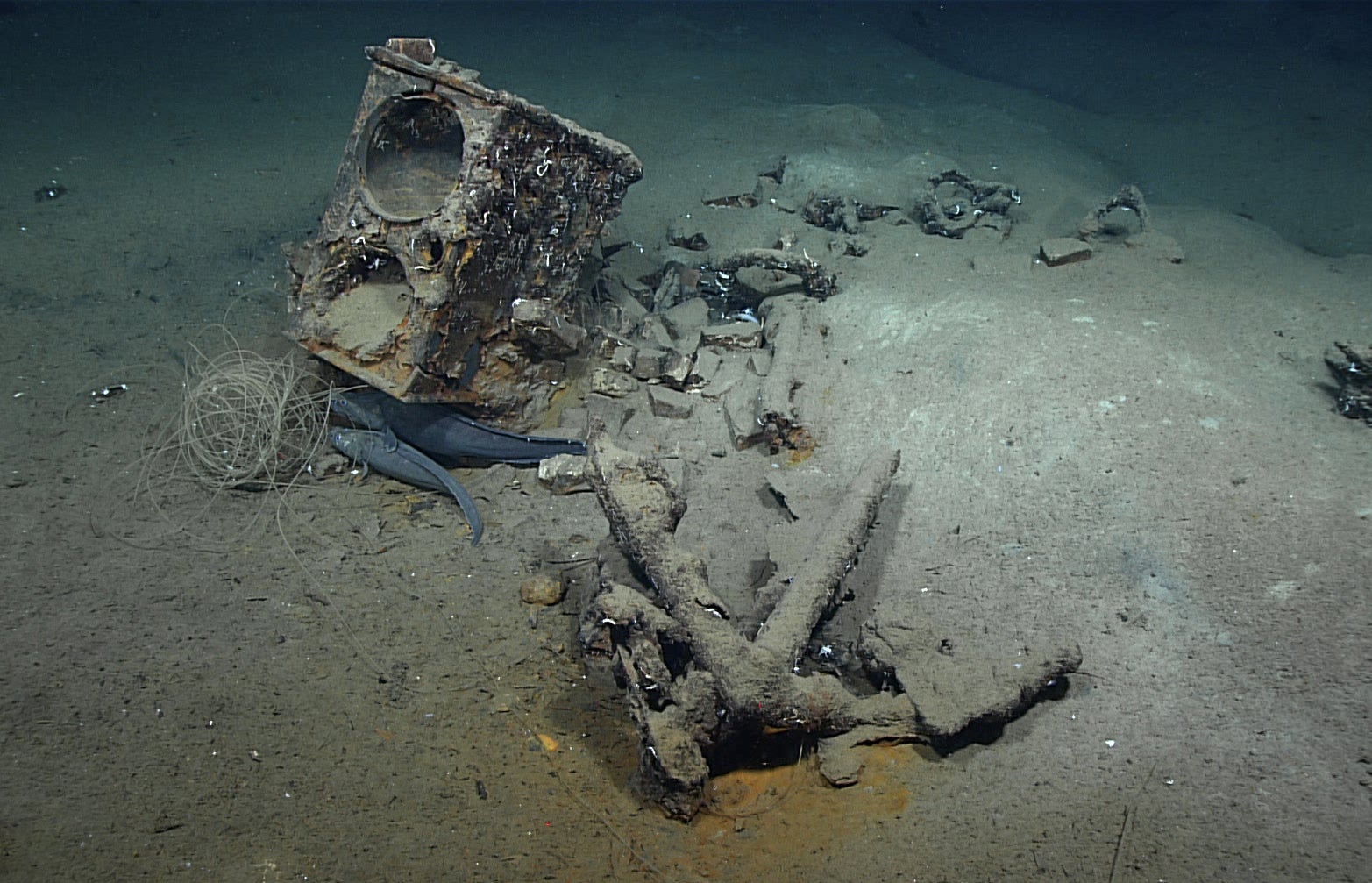Wreck of 200-year-old whaling ship may have been found in Gulf of Mexico
The brig, just 64 feet long, had been built in 1815 in Westport, Mass., and was a 20-year veteran of the whaling industry

The Industry had been battered in a violent squall in the Gulf of Mexico. Its masts had been torn away. Its crew had abandoned it. And its floating remains had been picked clean by another whaling ship before the stricken vessel sank in 6,000 feet of water.
The brig, just 64 feet long, had been built in 1815 in Westport, Mass., and was a 20-year veteran of the whaling industry. Its sinking in May 1836 would make it the only whaling ship ever lost in the little-known whaling grounds of the Gulf.
On Wednesday, the National Oceanic and Atmospheric Administration announced that explorers believe they have found the wreck of the Industry, along with three of its anchors and what may be its “tryworks,” the cauldrons for rendering blubber into whale oil.
“It’s like finding a forgotten, lost story, and being able to share” it, said James P. Delgado, a senior vice president with the archaeology firm SEARCH Inc., which helped NOAA and the federal Bureau of Ocean Energy Management run the project.
It is also is a reminder of the slaughter that virtually wiped out the whale population of the Gulf of Mexico in the late 1700s to mid-1800s, as ships hunted whales to make oil for illumination and lubrication, he said.
The crew of the Industry survived the sinking and was rescued by another vessel.
A survey of the wreck, off the coast of Louisiana, was conducted on Feb. 25, when NOAA used the site to test a new underwater robot vehicle, Delgado said. The wreck had been spotted before, in 2011 and 2017, but no one knew exactly what it was.
The underwater robot was operated by experts aboard NOAA’s high-tech research ship Okeanos Explorer about 70 miles from the mouth of the Mississippi River, NOAA said in a statement.
Scientists on shore participated via satellite a connection. (Delgado monitored from his home in Rockville, Md.)
The Industry had sailed from Westport in late 1835 or early 1836, according to a research paper by Delgado and three colleagues, and wound up in the Gulf in the spring of 1836. It had already killed and processed enough whales to fill 230 barrels of whale oil.
It had made 21 voyages since its construction - helping make “Westport Point” an important whaling town, according to contemporary accounts cited in the research report. And because the Industry’s hull lacked copper sheathing, it was known as a “leaky” ship.
On its first voyage in 1816, its owners instructed the captain, “You will not return to Westport without a full cargo of oil [or] until your provisions are expended ... Wishing you an agreeable and prosperous voyage.”
The Gulf is not widely known as an area for whaling, but ships may have been hunting sperm whales there and in the Caribbean as early as the 1760s, according to a 2011 study of old logbooks in the journal Gulf of Mexico Science.
Most whaling was done in the Atlantic, Pacific and Arctic oceans, according to the New Bedford Whaling Museum.
But “entrepreneurs connected to the whaling industry in the late 1780s and 1790s were well aware of the [Gulf] and regarded [it] as a promising source of profit,” the authors of the 2011 study wrote.
An estimated 1,200 sperm whales were killed there during the whaling era, they wrote; globally, American whalers may have killed a quarter of a million sperm whales in the 18th and 19th centuries.
The Industry seems to have had a crew of 15, and it ran into foul weather on May 27. Spring in the Gulf can produce sudden, violent squalls, with winds of 70 mph and rapid changes in wind direction, according to published research on the phenomenon.
The wind was apparently strong enough to snap off the ship’s two masts, putting it at the mercy of the storm and forcing the crew into the lifeboats.
No crew list survives, but NOAA and Delgado pointed out that many U.S. whaling ships had diverse crews that included African Americans and Native Americans.
The crew in this case was rescued by a nearby whaling ship, the brig Elizabeth, also out of Westport, and arrived home safely on June 17. Had they been taken ashore to Louisiana, the African American crewmen could have been jailed, Delgado said.
Ports in Southern slave states at the time had “Seamen Acts,” which required local law enforcement officials to arrest and confine free Black seamen who left their vessels while in port, Delgado wrote.
After it was abandoned, the Industry drifted for about eight days. On June 3, it was encountered by the Nantucket whaler, Harmony. The Harmony’s crew went aboard, took the barrels of oil and other equipment, and departed.
The Industry is thought to have drifted on for about 80 miles until finally sinking - and vanishing for almost two centuries.
In 1887, after whaling in the Gulf waned, a steamship captain reported a large school of whales 150 miles from the mouth of the Mississippi.
“That there should be whales in the Gulf of Mexico is not all surprising,” the New Orleans Times-Picayune wrote. “But that a large number should be seen there would seem to show that this sea is again becoming a feeding ground for these animals.”
The newspaper added, “There was a time when they were found . . . in great numbers, but they were hunted so actively by the New England whalers that they were almost entirely driven from our waters.”
The Washington Post
Join our commenting forum
Join thought-provoking conversations, follow other Independent readers and see their replies
Comments
Bookmark popover
Removed from bookmarks